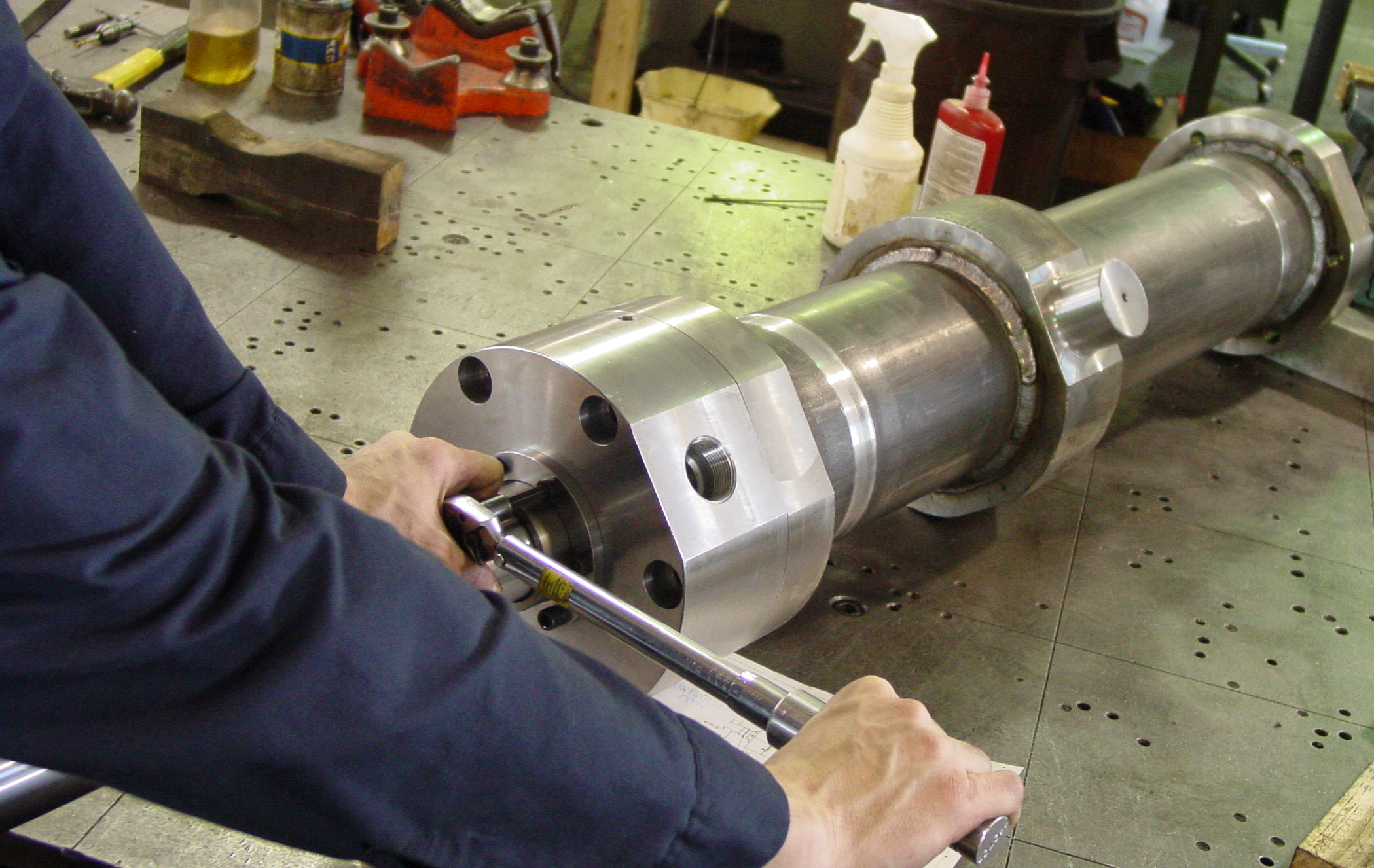
Pneumatic cylinders, also known as pneumatic actuators, are the products used to provide linear or rotary motion and force to automated systems, machines, and processes, for example in industrial applications.
At the ‘business end of a pneumatic system, pneumatic cylinders and actuators work when compressed air is forced into the cylinder or actuator itself in order to move a piston housed within it. The ‘work’ is carried out by a mechanism attached to the piston, converting the energy created into practical use, for example, a picking and placing system in factory automation.
Pneumatic cylinders and actuators are a simple way to achieve force and generate accurate linear and rotary motion and can be used in challenging environments, such as extreme temperatures. Lightweight, and requiring little maintenance, they generally produce less force and a slower speed than hydraulic or electric systems but remain a cost-effective alternative nonetheless.
Actuators and cylinders are produced to either ‘house standards’ – likely to be unique to a particular manufacturer – or produced to widely adopted or international standards. NFPA standards of pneumatic actuators are used in North America, whereas ISO is the standard common to Europe.
Also known as…
Pneumatic cylinders or actuators are often referred to as pneumatic drives.
How do pneumatic cylinders and pneumatic actuators work?
Key components of a pneumatic actuator include an end cap, a piston, a piston rod, a cylinder barrel, a wiper seal, and a cushion sleeve and seal. In a simple circuit, a single-acting pneumatic actuator can be operated by a button. When this button is pushed, the air moves the piston rod outward.
Pneumatic systems use compressed air to create rotary or linear mechanical motion and power applications that ‘do work’. The pneumatic actuator will use the compressed air to act on a piston inside the cylinder in order to create the required motion, for example, clamping, or moving a load along a linear path. The end application can be as varied as a specific device like a gripper or clamp to a vacuum cup used to handle glass.
A single-acting pneumatic cylinder or actuator has one port, where the air enters and then pushes the piston in one direction only. The piston is then returned to its original position by a spring. These pneumatic cylinders have limited stroke length so are useful for slower operations. They also use less air which gives optimum efficiency and lower operating costs.
A double-acting pneumatic actuator or cylinder has two ports that allow pressure to be applied in order to pull the piston in the opposite direction to the one created by the first port, otherwise known as an instroke and an outstroke.
Generally, the larger the cylinder’s bore, the greater the output in terms of force.
How do I select a pneumatic cylinder or a pneumatic actuator?
The type and characteristics of the actuator you need is defined by the application you’ll be using it for. Cylinders or actuators are available in a range of sizes, from 8mm through to 320mm, and perform different functions depending on what is required. They are either single-acting or double acting.
Key factors in the selection of a pneumatic cylinder or actuator:
- Type of motion: The pneumatic actuator or cylinder you need depends on whether you require a rotary or a linear motion.
- Pressure and flow requirements: Consider what you want from the pneumatic actuator or cylinder. This also covers other components required – if they are incorrectly sized they can affect its performance.
- Environment: Thanks to developments in corrosion resistance, pneumatic cylinders and actuators can be used in extreme temperatures. Stainless steel actuators or cylinders are also available.
- Special features: If you’re looking to save energy, consider using an integrated pneumatic cylinder or actuator such as IMI Norgren’s Integrated Valve & Actuator (IVAC). product. Also ensure the actuator or cylinder is correct in size and appropriate to the operation expected.
- Single acting or double acting: Pneumatic actuators or cylinders generally fall into one of these two categories depending on the type of application, the force or motion required, the size of the job, and the accuracy or control expected. Generally, a pneumatic actuator or cylinder will house a piston and rod within it.
- Type dependent on application: Several types of pneumatic actuators or cylinders are available, including rodless cylinders, roundline cylinders, and compact cylinders.
Types of pneumatic cylinders or pneumatic actuators
There are a number of different types of pneumatic cylinders and actuators available, depending on the application they’re needed for. They can be single-acting or double acting. Here are some examples of the types of pneumatic cylinders and actuators available:
- ISOLine Profile & Tie-Rod Cylinders: the most commonly found cylinder in industrial automation and are high performing, long-lasting, and able to operate in high temperatures.
- Roundline Cylinders: Ideally suited to lighter duties and in lower force applications, roundline cylinders are available as single or double acting.
- Compact Cylinders: Suited to machinery where space is a premium consideration, IMI Norgren’s range includes a compact cylinder that is one-third of the length of an equivalent standard ISO profile actuator.
- Integrated Valve & Actuator (IVAC): The IVAC combines a linear actuator, a glandless control valve, and two reed or solid-state switches and speed controllers in one integrated product. Increased energy efficiency, also means the number of parts required is reduced while still maintaining the ISO 15552 dimension standard.
- Rotary Actuators: Double acting, the rotary actuator provides an angular or turning motion and is available in rotary vane or rack & pinion versions.
- Rodless Cylinders: This double-acting linear cylinder is both lightweight and high strength, with 8 bore sizes.
- Stainless Steel Roundline Actuators and Stainless Steel ISO Tie-Rod Linear Actuators: For use in highly corrosive environments, such as the food industry or pharmaceuticals, the stainless steel ISO roundline actuators conform to ISO 6432.
Typical applications of pneumatic cylinders or pneumatic actuators
Pneumatic actuators and pneumatic cylinders can be used in a range of applications and are particularly common in factory automation systems. This includes manufacturing, materials handling, and packaging where they are used to position or move parts or tools, and perform ‘pick and place tasks. Other operations include clamping, where a workpiece is held in position by jaws operated by the cylinder, and punching, where the thrust from the single-acting pneumatic cylinder can be used to mark an object.
In the Food & Beverage industry, pneumatic stretch actuators and capping cylinders are used in PET perform hot and cold fill processes.
Do I need anything else to make pneumatic cylinders or pneumatic actuators work?
Relevant accessories include mounting systems, and additional detection systems should there be a more precise degree of positioning required. Actuators or cylinders can be mounted in a variety of ways, including foot mounts and neck mounts depending on the size of the operation and the type of actuator or cylinder used.
A pressure regulator to control the air pressure, as well as rigid or flexible tubing, the appropriate fittings, gauges, and sensors are also required. To control the speed of the actuator, a flow regulator can be used at the point of use.

